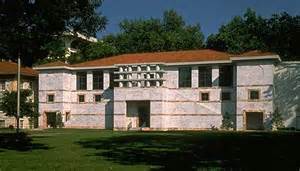Jan 13 2018 - May 20 2018
Michael C. Carlos Museum at Emory University
Atlanta, GA
The Ramayana is the most celebrated epic poem in South and Southeast Asia. It tells the journey of prince Rama, from his banishment from the kingdom of Ayodhya, to his triumphant return. Denied the throne on the eve of his coronation, Rama finds himself exiled to the forest for 14 years, accompanied by his devoted wife and brother, Sita and Lakshmana. After Sita is abducted by Ravana, the demon king of Lanka, Rama wages war to ensure her rescue, aided by his faithful friend Hanuman and armies of monkey and bears.
The earliest version of the Ramayana, attributed to the sage Vālmīki, was composed in almost 24,000 Sanskrit verses near the beginning of the Common Era. By the medieval period, numerous versions of the story appeared in vernacular languages across India and Southeast Asia. For 2000 years, this tale of moral conflict, familial piety, and violent folly has shaped religion, politics, and daily life through its varied renditions, from ancient sculpture to modern film. Many Hindus have understood Rama to be the incarnation of the god Vishnu and the embodiment of righteousness but, throughout time, authors and artists have emphasized the flawed nature of this all-too-human prince. The paintings in this exhibit date between the seventeenth and nineteenth centuries and, for the most part, were created by master painters in the courts of the Rajput kingdoms of Northwest India.
"Tell the whole story, from beginning to end!” Sita exclaims in desperation to the vulture Jatayu as Ravana carries her away from Rama, “Tell Rama and Laksmana just how I was carried off!" The paintings in this exhibition demonstrate some of the diverse, often conflicting, ways in which artists have, for centuries, attempted to heed Sita’s plea.
Credit: Exhibition overview from museum website
Exhibition Venues & Dates
Jan 13 2018 - May 20 2018
Michael C. Carlos Museum at Emory University
Atlanta, GA
